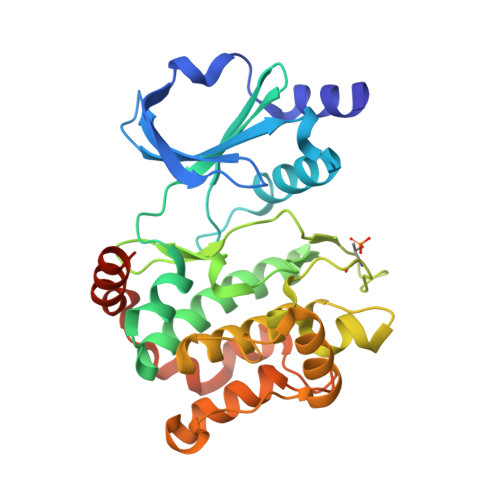Structural insights into the autoactivation mechanism of p21-activated protein kinase
Wang, J., Wu, J.-W., Wang, Z.-X.(2011) Structure 19: 1752-1761
- PubMed: 22153498
- DOI: https://doi.org/10.1016/j.str.2011.10.013
- Primary Citation of Related Structures:
3Q4Z, 3Q52, 3Q53 - PubMed Abstract:
p21-activated kinases (PAKs) play an important role in diverse cellular processes. Full activation of PAKs requires autophosphorylation of a critical threonine/serine located in the activation loop of the kinase domain. Here we report crystal structures of the phosphorylated and unphosphorylated PAK1 kinase domain. The phosphorylated PAK1 kinase domain has a conformation typical of all active protein kinases. Interestingly, the structure of the unphosphorylated PAK1 kinase domain reveals an unusual dimeric arrangement expected in an authentic enzyme-substrate complex, in which the activation loop of the putative "substrate" is projected into the active site of the "enzyme." The enzyme is bound to AMP-PNP and has an active conformation, whereas the substrate is empty and adopts an inactive conformation. Thus, the structure of the asymmetric homodimer mimics a trans-autophosphorylation complex, and suggests that unphosphorylated PAK1 could dynamically adopt both the active and inactive conformations in solution.
Organizational Affiliation:
MOE Key Laboratory for Protein Science, School of Life Sciences, Tsinghua University, Beijing 100084, China.

















